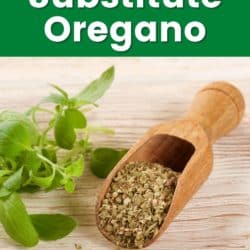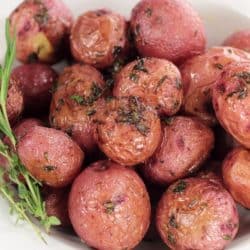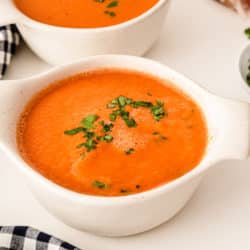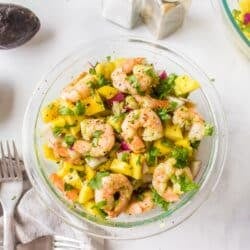11 Simple Substitutes for Oregano (Fresh & Dried Options)
Oregano is a type of herb that has been used in cooking for centuries. It has an earthy flavor with a slight pepperiness to it. This article has simple substitutes for oregano in case you don’t have any in your kitchen. Some swaps for oregano include basil, thyme, parsley, and Italian herb seasoning.
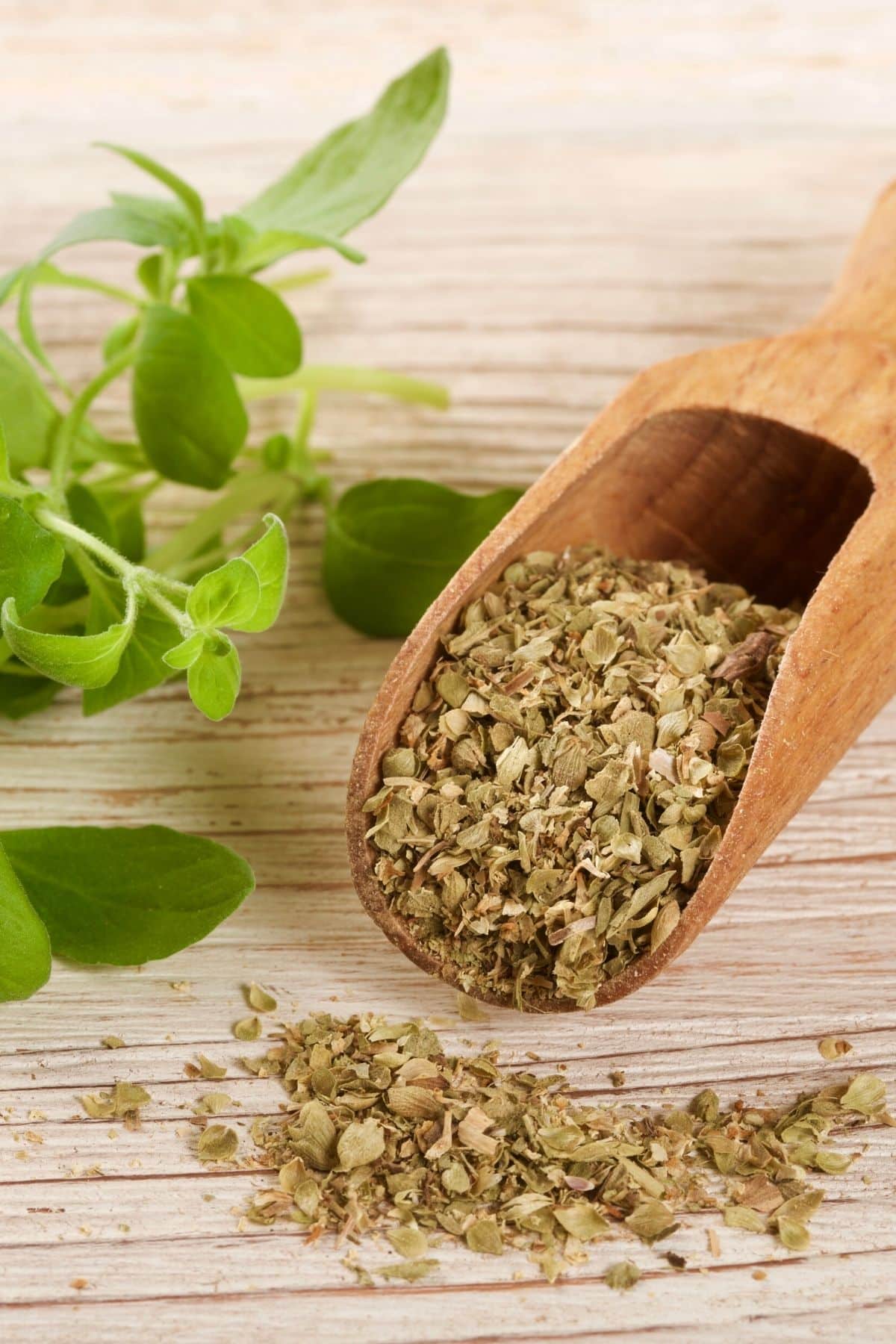
Originating from the Mediterranean, oregano is most commonly used as a flavoring and garnish in Italian cuisine or Mexican cuisine.
Warm and with a subtle sweetness, it can also be found in Mexican dishes such as salsa or enchilada sauce, but the taste will vary depending on how much oregano is added. You’ll also find it in Italian recipes such as pizzas.
In addition to being consumed by itself, oregano can be mixed into mayonnaise for chicken or tuna salad, or blended into hummus for dipping vegetables or chips.
You can find oregano available in both fresh and dried forms. You may also come across oregano oil, although this isn’t used for culinary purposes. Instead, it is an essential oil used for treating certain health conditions.
Different Types of Oregano
The most common type of oregano that you will find in stores is Greek Oregano.
The perfect seasoning for tomato-based dishes like pizza and lasagna, it is part of the Origanum vulgare family. Confusingly, this is sometimes referred to as wild marjoram – although the marjoram that you buy in stores is a completely different herb!
Other types of oregano include Syrian oregano – which you usually find mixed with the Middle Eastern spice Za’atar – and Italian oregano, which is popular in Italian and Syrian dishes.
You may also come across Cuban oregano which has distinctive, thick leaves and a very strong flavor. Ideally suited to Mediterranean dishes, it is often used in pizza.
Fresh vs. Dried Oregano
Ask any chef whether it is better to use fresh or dried herbs in your recipes and you will invariably be told to go for fresh every time.
Oregano, however, may be the exception to the rule.
Fresh oregano has a very pungent flavor that can dominate the dish to which you add it. This applies whether you add it raw at the end of a recipe, or if you cook it with your other ingredients.
If you want to cook with fresh oregano, a good way to counter its aggressive flavor is to use it in a way where you don’t actually end up eating the leaves. This could be by putting it inside a roasting chicken, for example, and letting the flavor infuse into the meat, or simmering it in olive oil and then using the oil to prepare your dish.
Dried oregano, on the other hand, tends to be quite subtle and is far more commonly used. To get the best out of it, rub it between your fingers before adding it to the dish – it really helps bring out the flavor! You can find dried oregano in the spice section of your local grocery store.
If you want to substitute dried oregano for fresh (or vice versa) then use 1 teaspoon of dried oregano for every tablespoon of fresh.
Substitutes for Oregano
If you are all out of oregano but need some for a recipe, then you’ll be pleased to hear that there are lots of alternatives you can use in its place.
The best one to choose, though, will depend on just what you’re cooking.
Some of these herbs have strong flavors of their own and can alter the flavor of your finished dish quite a bit. For that reason, I’ve suggested the types of recipes in which they’ll work best.
1. Basil

Basil is one of the best substitutes for oregano – either fresh or dried – in your Mediterranean-style recipes. That’s because it has that particular flavor profile that we tend to associate with Italian food.
Fresh basil has a stronger, brighter flavor than dried and is the tastiest option if you can get it, but dried basil is perfectly acceptable too! Both can be used in place of oregano.
Substitute fresh or dried oregano with equal parts of fresh or dried basil.
2. Thyme
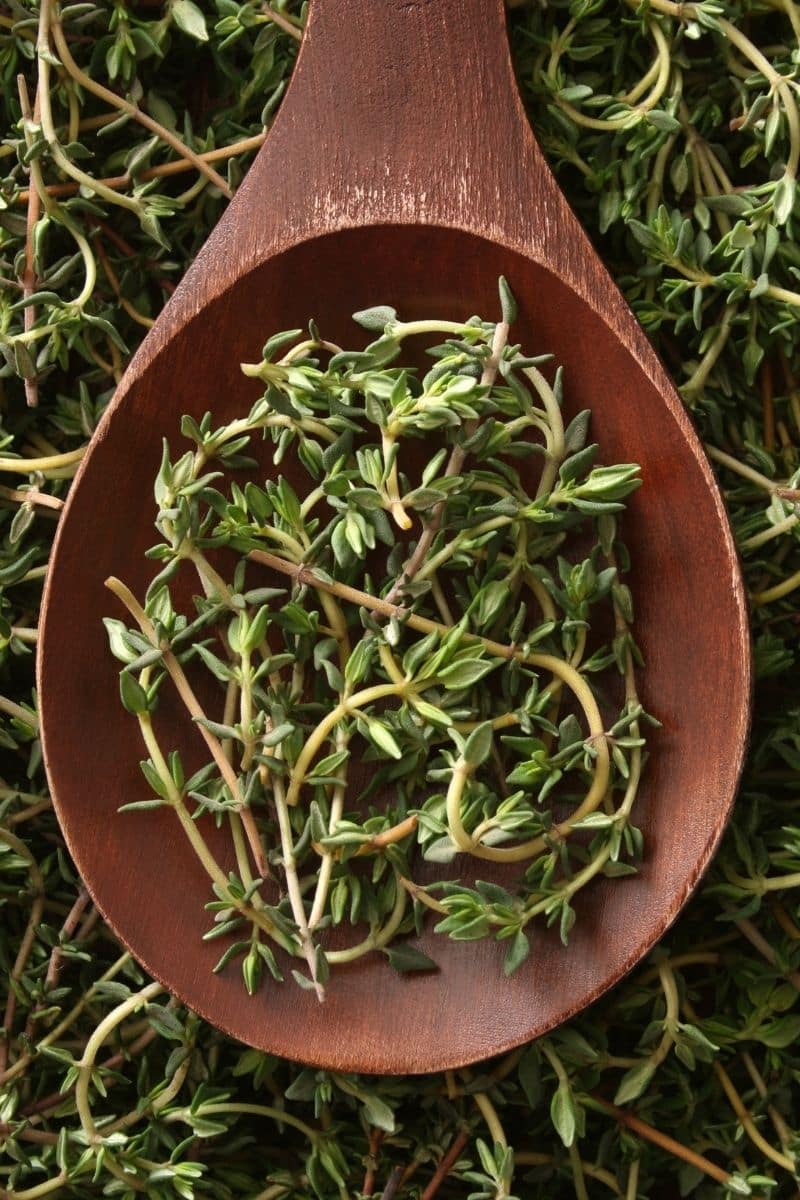
Thyme is a delicious, versatile herb with a flavor that intensifies during cooking. It’s a member of the mint family and is a good substitute for oregano.
Whilst fresh oregano and fresh thyme are relatively close in flavor, dried thyme is a little stronger than dried oregano. Still, they have a similar flavor and thyme is a common ingredient you can find at almost any store.
Use it as a substitute for oregano in tomato-based dishes, beef dishes, bean or potato dishes, or salad dressings.
Substitute fresh oregano with equal parts of fresh thyme, but for every teaspoon of dried oregano use 3/4 teaspoon of dried thyme.
3. Parsley

Parsley is another versatile herb with a distinctly Mediterranean flavor and an attractive appearance that makes it popular as a garnish. You can use either flat-leaf parsley or curly parsley.
It works best as an alternative to oregano in tomato-based recipes such as Italian dishes or pizza sauce. Fresh or dried parsley is one of the best oregano substitutes, although you’ll miss a bit of the complex flavor.
Substitute fresh or dried oregano with equal parts of fresh or dried parsley.
4. Dried Italian Seasoning
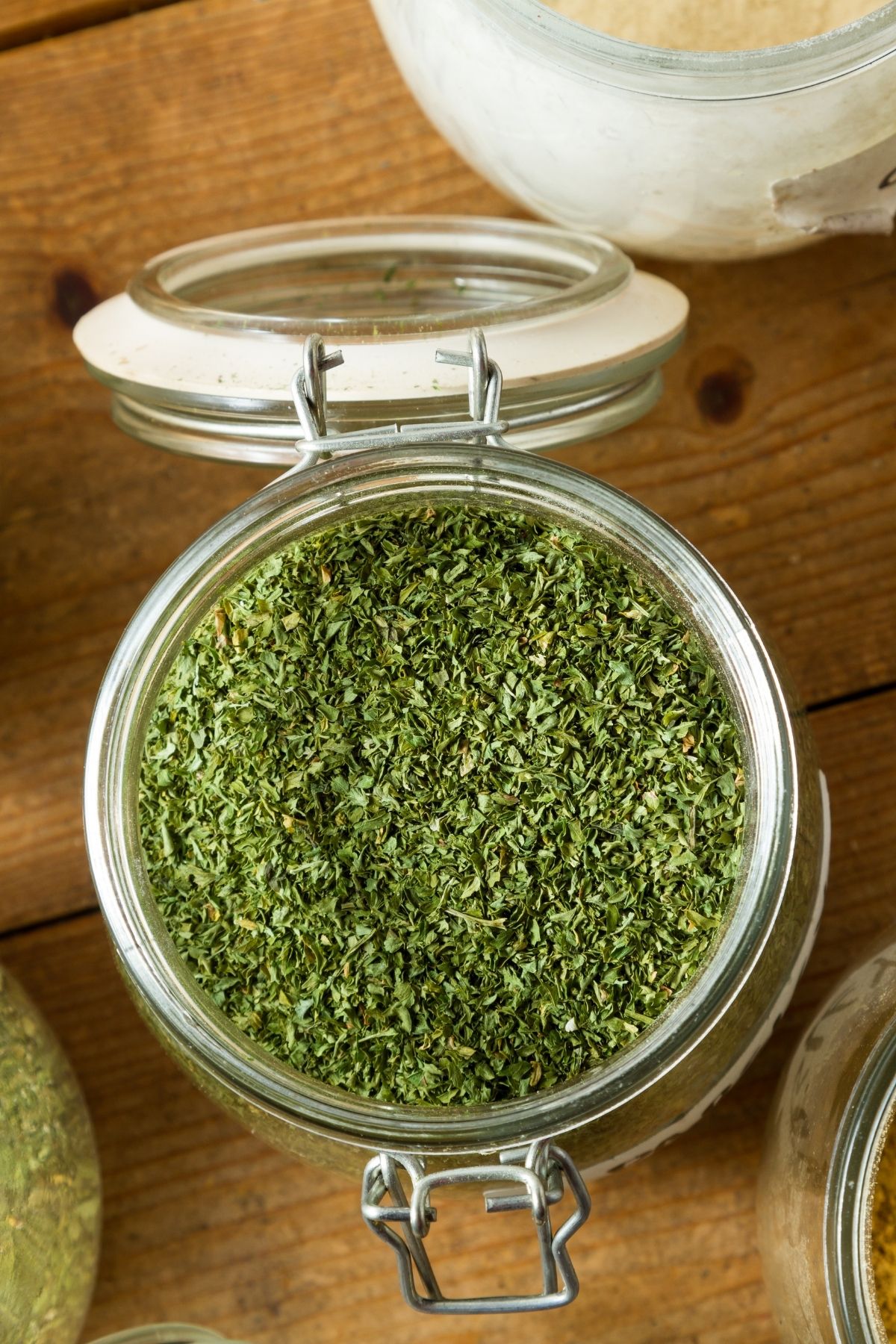
Perfect for Italian-style dishes (of course!) Italian seasoning uses oregano as an ingredient. So if you have any on hand, it makes a great replacement for “straight” oregano in a recipe.
Although it will contain less oregano than your recipe might need, this will be more than compensated for by its other ingredients, which include basil, thyme, rosemary, and marjoram.
Use it in tomato-based recipes, fish dishes, pasta, and chicken dishes. This is probably one of the best oregano alternatives with a very similar flavor.
Substitute two teaspoons of dried oregano with one teaspoon of dried Italian seasoning.
5. Marjoram
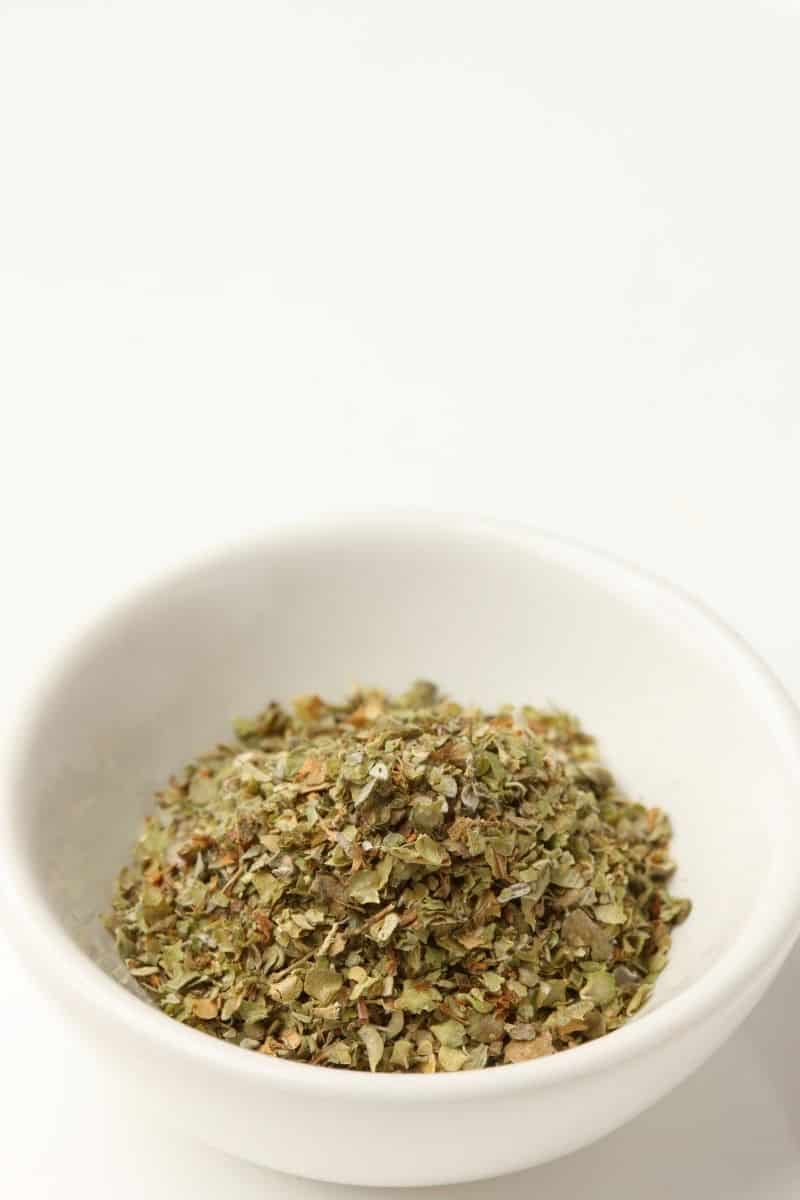
As mentioned earlier, oregano and marjoram are often confused with each other because of oregano’s alternative name of “wild marjoram”. Nevertheless, they are two quite separate herbs.
Marjoram has a more subtle, sweet flavor than oregano and can be used as an alternative in either its fresh or dried forms. It works best in Mexican-style recipes and is a great substitute.
Substitute 3/4 teaspoon of fresh or dried oregano with 1 teaspoon of fresh or dried marjoram.
6. Tarragon
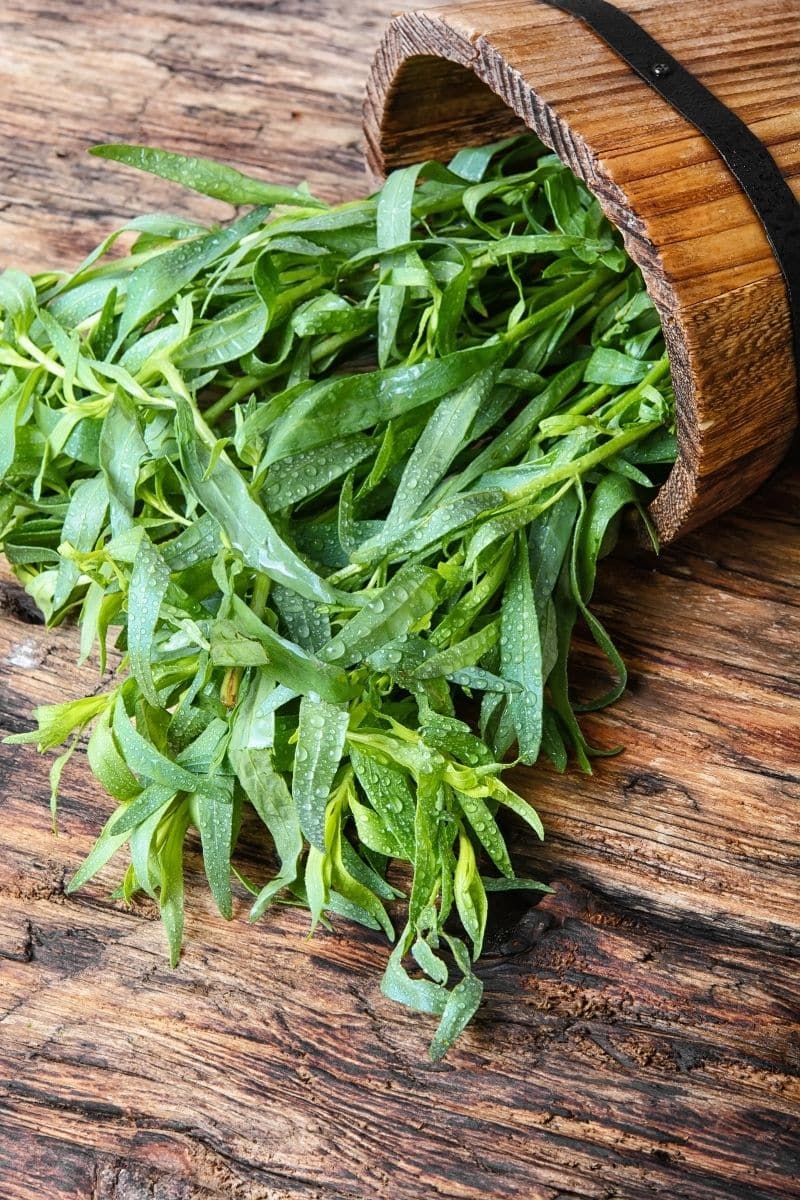
Tarragon is a uniquely delicious and aromatic herb, with the French variety the most commonly used in cooking. It has a licorice flavor and perhaps a milder flavor overall than oregano.
Found mostly in its dried form, it works best as an oregano substitute in tomato-based dishes or chicken. It is also great in salad dressings.
Substitute dried oregano with equal parts of dried tarragon.
7. Mexican Oregano
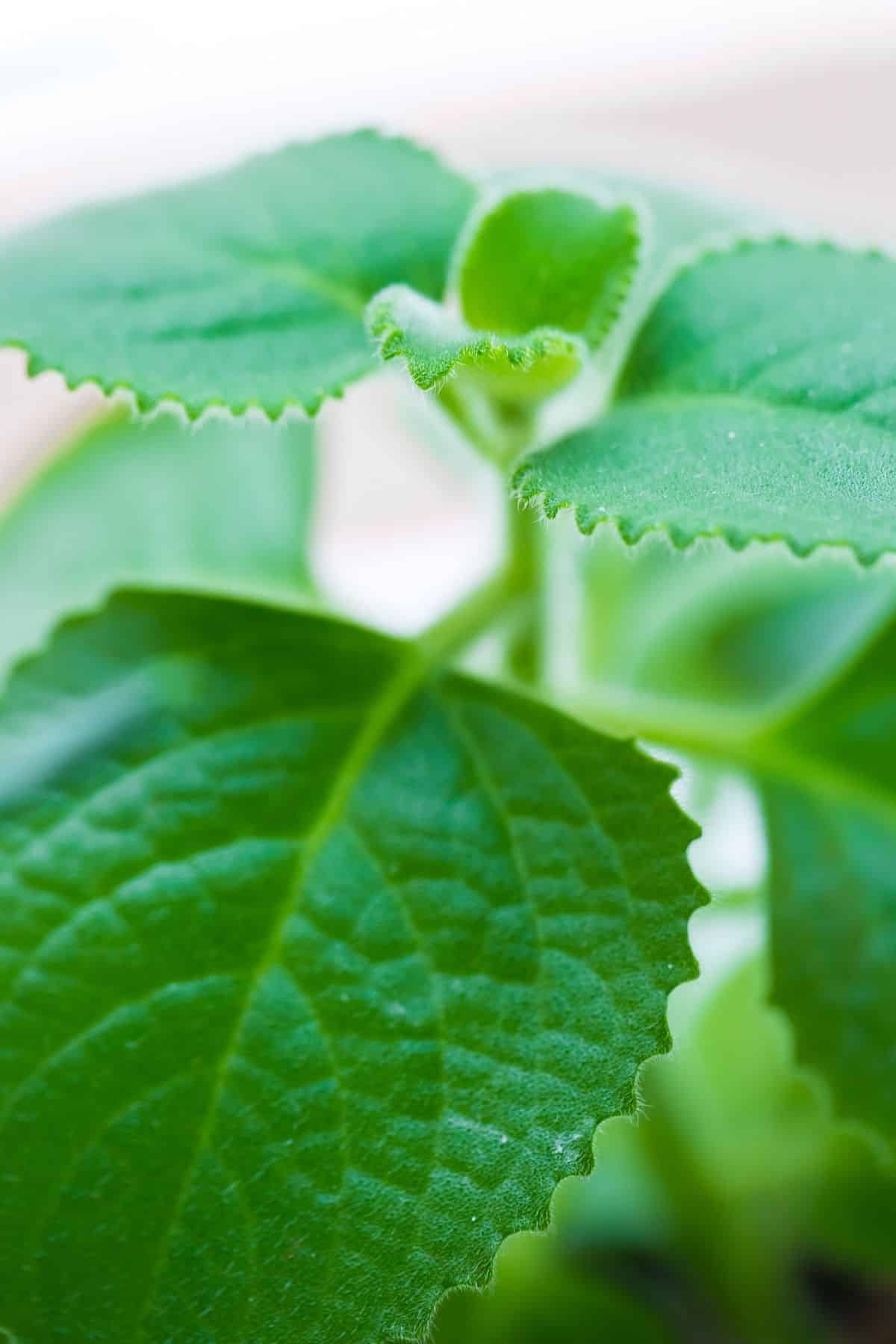
It may sound strange to suggest using Mexican oregano as a substitute for oregano – after all, isn’t it essentially the same thing?
Well actually, it isn’t! Despite its name, Mexican oregano is a totally different herb. But part of its name is accurate since it originates from Mexico rather than the Mediterranean!
Sometimes referred to as Mexican sage or Mexican marjoram, Mexican oregano has a very strong flavor – roughly twice as potent as oregano! It works really well in spicy foods like chilis, tacos, stews, and traditional Mexican dishes.
Substitute 1 teaspoon of fresh or dried oregano with 1/2 teaspoon of fresh or dried Mexican oregano.
8. Dill

Commonly found in fresh form but also available dried, dill has a lovely flavor reminiscent of caraway.
In many ways, it tastes quite different from oregano, so it won’t work well as a substitute in all recipes. It does, however, go really well in seafood dishes, soups, and potato salads.
Be sure to add it to your recipes right at the end of the cooking time, as it tends to lose its flavor if it is added too soon.
Substitute 2 teaspoons of fresh or dried oregano with 1 1/2 teaspoons of fresh or dried dill.
9. Sage
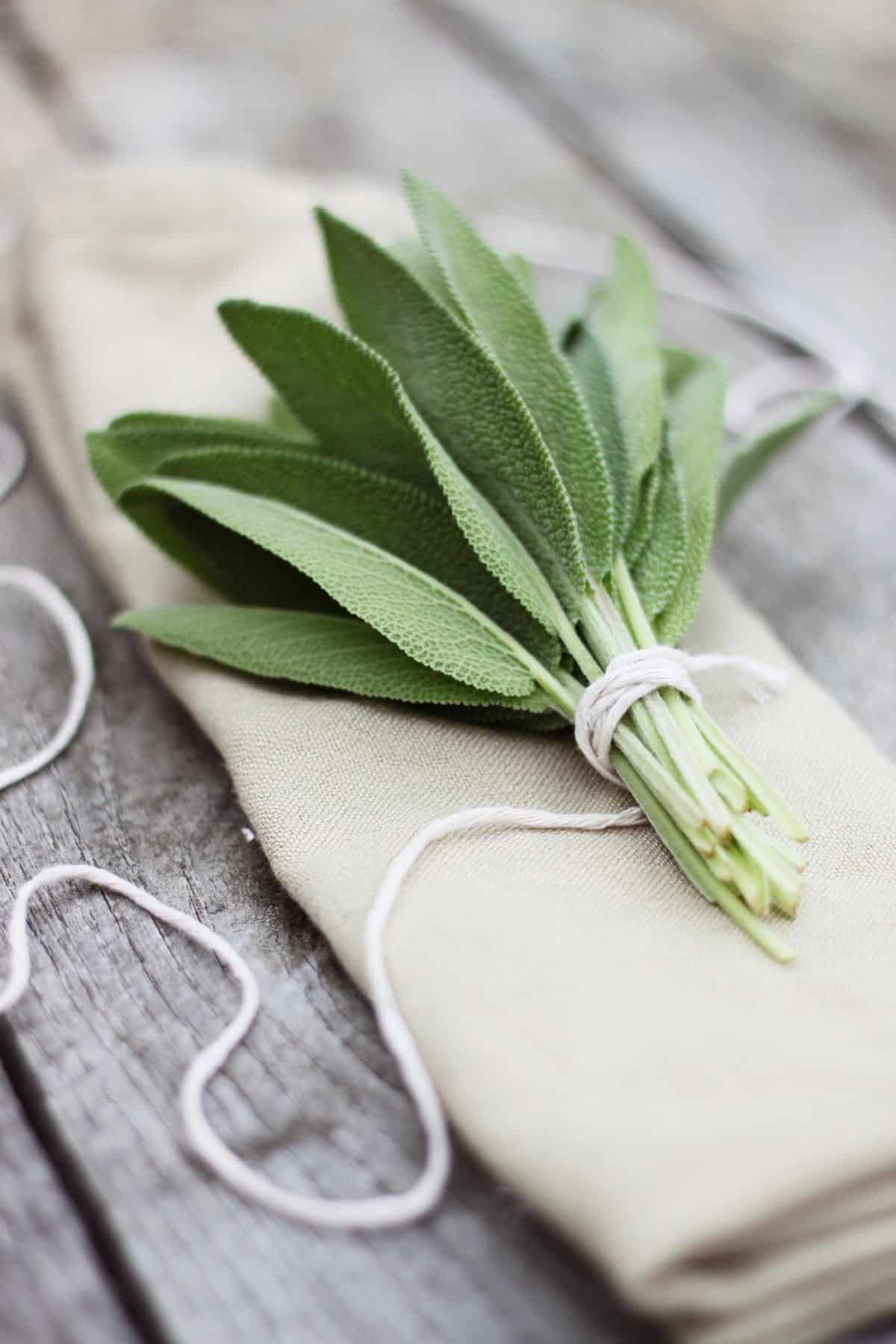
Instantly recognizable as an ingredient in stuffing, aromatic sage can work well as a replacement for oregano in certain recipes.
Available dried or fresh, it has quite a distinctive flavor and is best suited to meat dishes like beef, pork, or poultry.
Substitute 2 teaspoons of fresh or dried oregano with 1 1/2 teaspoons of fresh or dried sage.
10. Fennel

Fennel has quite a strong anise flavor and the whole of the bulb is edible, although I recommend you only use the fronds as a substitute for oregano. Fennel fronds are a great alternative for oregano.
Because its taste is so unique, you need to be quite sure that it will complement – and not conflict with – your dish. In general, fennel works best in tomato-based dishes, roasted meats, soups, and salad dressings.
Substitute 2 teaspoons of fresh oregano with 1 1/2 teaspoons fresh fennel fronds.
11. Rosemary

Rosemary is probably the most potent of all the herbs listed here and should only be used if some of the better choices are not available.
Ideal with meat, poultry, casseroles, potatoes, and tomato-based dishes, it is widely available in both fresh and dried forms. The dried form can be quite tough and doesn’t break down easily, so chop it well before adding it to your recipe.
Most types of rosemary at the store will be the dried version.
Substitute 1 teaspoon of fresh or dried oregano with just a pinch of fresh or dried rosemary.
Potential Health Benefits of Oregano
Lots of people rave about the health benefits of oregano. Although most of those are associated with the essential oil, the culinary herb does have some useful qualities.
Oregano is high in antioxidants, protecting the cells in your body from the “free radicals” that can lead to conditions like heart disease and cancer.
Studies have also shown that it may kill off cancer cells, while this research published in 2015 showed how the carvacrol in oregano can suppress their growth
Oregano is also a relatively good source of vitamin K, supplying 8% of your daily needs in one teaspoon.
Oregano Substitute Summary Chart
Here’s a chart with all of the best oregano alternatives, plus the pros and cons.
| Substitute | Pros | Cons |
|---|---|---|
| Basil | Complements Mediterranean dishes well. Fresh basil offers a bright, vibrant flavor. | May not mimic oregano’s slightly peppery note. |
| Thyme | Intensifies during cooking, suitable for a variety of dishes. Close in flavor to fresh oregano. | Dried thyme is stronger; adjustments needed to match oregano’s flavor. |
| Parsley | Adds a fresh, clean flavor. Works well in tomato-based recipes. | Lacks the earthy and peppery notes of oregano. |
| Dried Italian Seasoning | Contains oregano among other complementary herbs. Versatile for Italian dishes. | Less oregano-specific flavor due to the blend of herbs. |
| Marjoram | Sweet, subtle flavor. Closest to oregano, especially in Mexican recipes. | More delicate than oregano; may not stand out in robust dishes. |
| Tarragon | Unique, aromatic flavor suitable for chicken and tomato dishes. | Distinct taste that doesn’t closely resemble oregano. |
| Mexican Oregano | Strong, potent flavor suitable for spicy foods. | Significantly different from Mediterranean oregano; may overpower if not used carefully. |
| Dill | Works well in seafood dishes and soups. | Quite different from oregano; might not suit all recipes. |
| Sage | Aromatic, great for meat dishes. | Distinctive flavor may not align with oregano’s role in a dish. |
| Fennel | Anise-like flavor complements certain dishes like roasted meats. | Unique taste that may not blend well with all recipes calling for oregano. |
| Rosemary | Potent, ideal with meat, poultry, and potatoes. | Very strong; use sparingly as its flavor profile is quite different from oregano’s. |
More Substitute Articles You Might Like
- Substitutes for Dill
- Substitutes for Garam Masala
- Substitutes for Lemongrass
- Substitutes for Marjoram
- Substitutes for Nutritional Yeast
- Substitutes for Ghee
- Substitutes for Sage
- Substitutes for Dried Basil
Don’t Miss These Delicious Recipes Using Oregano!
Conclusions
I hope this guide to the best oregano substitutes has helped you find a perfect alternative to use in your recipes. One of the fun things about cooking is experimenting with different flavors, and by making a familiar recipe with a different herb you may just create a new version of the dish that tastes even better than the original!
Don’t forget to join my newsletter list to get exclusive clean eating recipes and tips. The newsletter is 100% free with no spam; unsubscribe anytime.
About the Author: Carrie Forrest has a master’s degree in public health with a specialty in nutrition and is a certified holistic nutritionist. She is a top wellness and food blogger with over 5 million annual visitors to her site. Carrie has an incredible story of recovery from chronic illness and is passionate about helping other women transform their health. Send her a message through her contact form.


